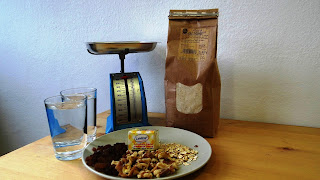The Pantone Challenge había escogido blanco. El Blanco me parecía insípido, anodino, sin gracia. Hasta que me paré a pensar. Toda mi casa es blanca desde las cortinas a la mesa pasando por las puertas, las sillas, las paredes, los armarios y podría seguir. Porqué? Fue una decisión totalmente consiente. Me da paz, tranquilidad y luz. Cosas necesarias para estar bien en el hogar. Dicho así debería ser muy fácil hacer algo no? O sea que después del bloqueo inicial no tardé en encontrar un DIY blanco y veraniego adecuado para esta entrada de solsticio. Si es que algún día el verano decide quedarse porque este año no lo tenemos muy claro ;-). La idea esta inspirada en este blog.
I
have chosen white for The Pantone Challenge. White seemed tasteless, bland, unfunny. Until
I stopped and I thought a little bit. My whole house is white from the curtains
to the table through the doors, chairs, walls, cabinets and I could go on and
on. Why? It was a totally conscious decision. It gives me peace, tranquillity and light. Needful things to be confortable at
home. It seems it should be very easy to
make something up? So, after the initial blocking, I found a DIY in white suitable for the summer
solstice, if some day this year summer decides to stay .... The idea is inspired by this blog..
0) Materiales -Latas vacías -Empty cans
(en este caso las leches en polvo de Arlet) (in this case Arlet’s milk powders)
-Pintura -Painting
-Martillo -Hammer
-Destornillador -Screwdriver
-Alambre -Wire
1) Una vez están las latas limpias las metemos en el congelador llenas de agua. Es la manera para poder hacer agujeros en la lata sin que se deforme. Un consejo, llenarlas hasta arriba del todo. Yo no lo hice y la lata se puede deformar más fácilmente.
1) Once the cans are clean place them in the freezer filled with
water. It is the way to make holes in the can without deforming them. One tip,
fill up untill the top. I did not do it and the can can be deformed more
easily.
2) Marcamos dos agujeros en la parte superior para poder poner un asidero y también los puntos para el dibujo queremos en el centro.Una vez marcados los hacemos con el martillo y un destornillador o algo punzante.
2) We mark two holes in the top for a
handle and mark with dots the
desired
drawing in the center . Once the dots are marked use a hammer and a screwdriver or something sharp to
make the holes.
3) Cuando este seco podemos empezar a pintar como más nos guste. En este caso hemos utilizado pintura pero también puede ser espray. Ah! Y en paralelo moldeamos un alambre un poco grueso para poder coger y colgar los porta velas dónde más nos gusten.
3) When is dried we
can start painting. In this case we used paint but
we can also use spray. Ah! In parallel we mold a thick
wire to make a handle to hang the candle cans.
4)We haven’t drilled all the
cans, because so we have a recycled
flower pot . Finally we topped it all with a bouquet of
wild Umbelliferae.
Todo preparado para las fiestas de Verano ahora sólo falta el calor!
Everything ready for our summer parties, we just need a hotter weather!!!
No olvidéis checkear los otros posts del reto:
Don't forget to check the other blogs of the challenge:
.jpg)








.JPG)

.JPG)


.JPG)




















.JPG)

